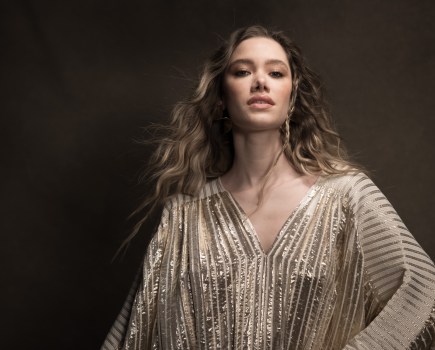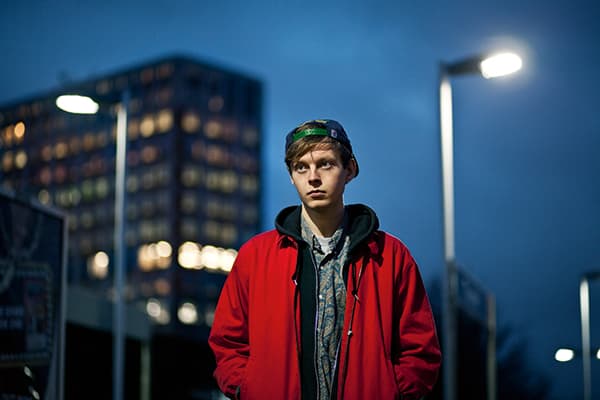
Portrait photography is, perhaps, a deceptively simple-looking genre. A cursory glance at, say, a head-and-shoulders shot fails to take into account the finer details that go into the process. You are, after all, attempting to represent the character of a sitter, to bring out their best qualities and, in a sense, to communicate a narrative of a life.
One photographer who is particularly adept at creating engaging and inspiring portraits is London-based commercial and portrait photographer Phil Sharp, who creates truly distinctive and, at times, minimalist contemporary portraits. His website portfolio is a real masterclass in how to use the simplest methods to create lasting portraits, whether it’s through lighting or, of particular interest in this special issue, shallow depth of field.
‘I don’t think a shallow depth of focus is necessarily important for head shots,’ says Phil. ‘However, I think it’s a method that works because the viewer is forced to connect with the subject’s eyes. Human eyes can only focus on a narrow plain when something is close to us; images with a narrow depth of focus in some way feel more real. Also, using f/2 or wider is an aperture that allows the photographer to shoot with natural light. This can help with head shots.’
Creating a portrait with a shallow depth of field carries with it a variety of considerations – the heaviest to weigh on the mind of the photographer is surely the most appropriate lens for the task. For Phil, the choice comes down to aperture capability.
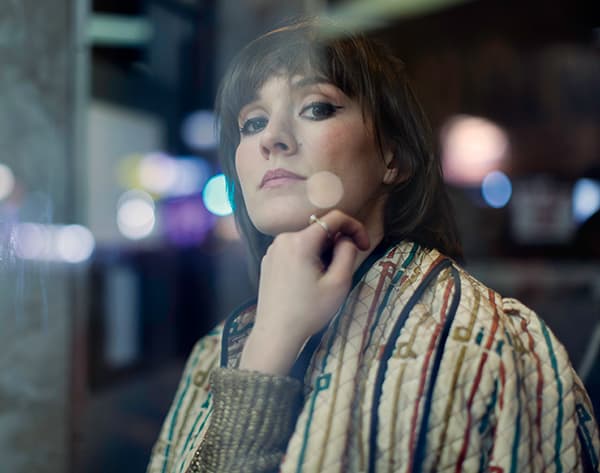
Musician Beth Orton
‘If you’re using a 35mm camera system, you need a lens capable of f/2 or quicker,’ says Phil. ‘I tend to shoot a lot of portraits at f/1.6 to f/2. One of the main tricks is to use live view mode, and zoom in and focus manually rather than relying on autofocus. I look to get the eyes sharp, or whichever eye is nearest to the camera. With enough practice, I’ve found I can manually focus faster and more accurately than most systems can autofocus. I’ve recently started using Sony cameras (such as the Alpha 7R II) and one of the reasons for that is I can use live view while still looking through the viewfinder – something that is not possible with DSLR cameras.’
That’s not to say Phil is restricted. In fact, he uses a variety of lenses. For portraiture he uses the Zeiss Otus 85mm and 55mm. Phil says the 85mm is perfect for head and shoulders, while the 55mm is a good bit wider without too much distortion.
‘The Zeiss Otus lenses are the best I’ve used,’ says Phil, ‘although many of my best portraits were taken with other, much cheaper lenses. I started shooting head shots with the Canon 85mm f/1.8 and they’re still some of my best images.’
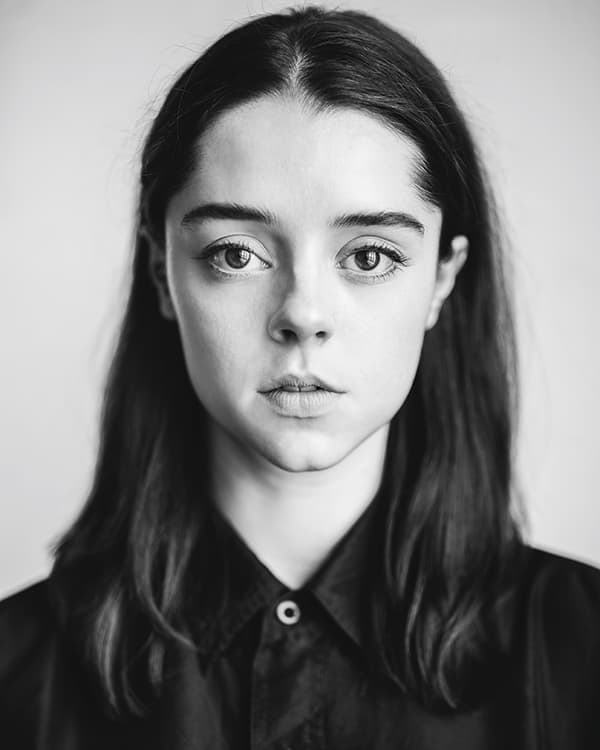
Phil’s portrait of actor Bobby Rainsbury
The elements
Of course, a good portrait is not simply about shallow depth of field and lens choice. What would a portrait be without a proficient approach and understanding of the very thing that allows the portrait to be seen?
‘Most of my actors’ portraits are taken with natural light,’ says Phil. ‘Many are taken with the light right behind me, my back right up against a window, and even on a gloomy day it’s normally possible to get decent exposure at something like 1/200sec at f/2 and ISO 400.
I use flags (black poly board) on either side of the subject to control the light on the side of the subject’s face. I also sometimes use mirrors behind the subject (out of shot) to bounce a bit of light back on the side of the face.’
Preparation too is key. As Phil says, the main element of preparation is getting inspired. He is a photographer constantly seeking images he likes online, or referring to his library of photo books.
‘Before every shot, it’s important to think that this could be the best photo you’ve ever taken,’ says Phil. ‘Taking photos for a living is a privilege, so I try to approach every job as a chance to make something great. From a technical point of view it’s important to check that all your kit is working, batteries are charged and memory cards are clear. I normally go into a shoot with a pretty good idea of what I’m looking for, although I’m always happy to take on an alternative idea if something pops into my head.
‘My portraits are collaborative,’ Phil continues. ‘All my subjects are aware that their portrait is being taken. Essentially, I can only shoot what my subject is prepared to give me. With some portraits I might be collaborating with an art director or stylist. As I said, even though I might have a plan, it’s important to consider what the sitter might have in mind, too.’
Something important to consider – and perhaps even something that photographers new to the genre can forget – is that your foremost responsibility is to make the sitter feel comfortable. This is their shoot, and in many cases the photographer is there to best represent the person being photographed.
‘I think sitters like to feel confident that you know what you’re doing,’ says Phil. ‘As I get older and more experienced, I think that confidence rubs off onto my subjects. It’s also worth noting that virtually every subject can take a while to relax, no matter how confident they are as people. I try not to overbook, so I never feel rushed. I like to take my time and chat. Being a decent conversationalist is a useful skill for photographers.’
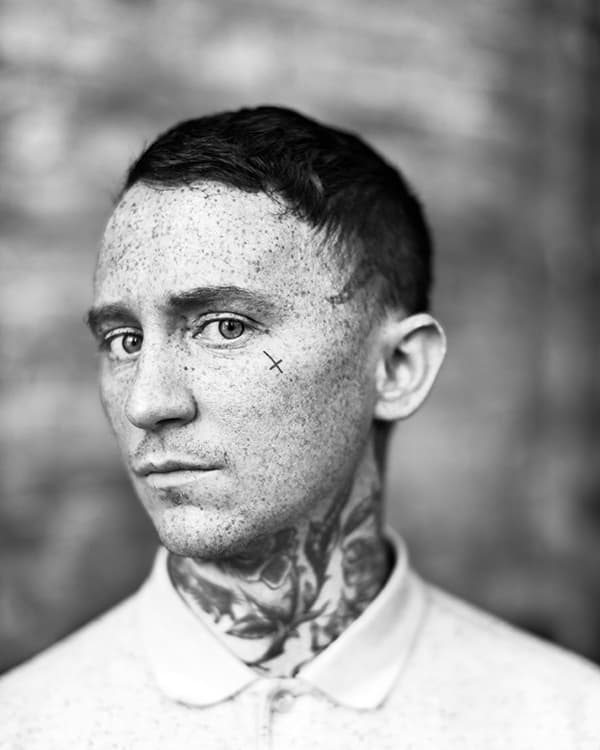
Musician Frank Carter
The aim
The question, then, is what should a good portrait aim to do? The answer is perhaps something that can be applied to all genres of photography – it’s about connection.
‘Essentially, as with all art, you want the viewer to feel something,’ says Phil. ‘You want the viewer to feel a spark of connection of some sort. Each subject is an individual with his or her own story and inner life. In a way, a good portrait can cut away the photographer and connect the subject with the viewer.
‘The fact is people are interesting. We’re complex, confusing and contradictory. We communicate via facial expressions and body language far more than we think we do. Portrait photography is a way of learning more about other humans and myself. I love looking at portraits from the 19th century, so I kind of hope someone might look at my mine in the 22nd century.’

Actor John McCrea
About Phil Sharp

Phil is a London-based freelance portrait and commercial photographer. To see more of his work, visit www.philsharp-photo.com






